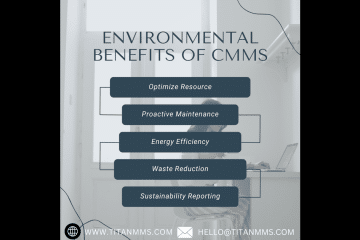In today’s fast-paced business environment, effective work order management is crucial for ensuring smooth operations and maximizing productivity. From manufacturing plants to service-oriented industries, every organization deals with work orders on a daily basis. However, many struggle with inefficiencies and bottlenecks in their work order processes, leading to delays, errors, and frustration among employees and customers alike.
Introduction to Work Order Management
Work order management involves the creation, tracking, and completion of tasks or assignments within an organization. These tasks can range from maintenance requests and service orders to production schedules and project assignments. Efficient work order management ensures that tasks are completed promptly, resources are utilized effectively, and customer satisfaction is maintained.
Challenges in Work Order Management
Lack of Organization:
One of the primary challenges in work order management is the lack of organization. Without a structured system in place, work orders can get lost or overlooked, leading to delays and missed deadlines.
Communication Issues:
Poor communication among team members can also hinder effective work order management. Misunderstandings or incomplete information can result in errors and rework, wasting valuable time and resources.
Delayed Responses:
Another common issue is delayed responses to work orders. Whether it’s due to a backlog of requests or inefficient communication channels, delays can disrupt workflow and impact customer satisfaction.
Importance of Improving Work Order Management
Improving work order management is essential for several reasons. Firstly, it enhances operational efficiency by streamlining processes and reducing unnecessary delays. Secondly, it improves communication and collaboration among team members, leading to better coordination and faster response times. Finally, it helps organizations maintain a competitive edge by delivering high-quality products and services in a timely manner.
Streamlining Work Order Processes
To improve work order management, organizations can implement several strategies:
Utilizing Digital Tools:
Investing in digital tools such as work order management software can significantly improve efficiency and accuracy. These tools allow for easy creation, tracking, and assignment of work orders, as well as providing real-time updates and notifications.
Implementing a Centralized System:
Having a centralized system for managing work orders ensures that all relevant information is accessible to the right people at the right time. This eliminates confusion and reduces the risk of errors caused by outdated or incomplete data.
Automating Repetitive Tasks:
Automation can further streamline work order processes by eliminating manual tasks and reducing the risk of human error. By automating routine activities such as scheduling and reporting, organizations can free up time for more value-added activities.
Enhancing Communication and Collaboration
Effective communication is key to successful work order management. Organizations can improve communication by:
Clear Instructions and Expectations:
Providing clear instructions and expectations for each work order helps ensure that tasks are completed correctly and on time. Clear communication reduces the risk of misunderstandings and errors.
Real-time Updates and Notifications:
Implementing systems that provide real-time updates and notifications keeps all stakeholders informed about the status of work orders. This transparency fosters trust and accountability among team members.
Integration with Other Software:
Integrating work order management software with other business systems such as ERP or CRM platforms enables seamless data exchange and workflow automation. This integration improves efficiency and reduces duplication of effort.
Prioritizing and Assigning Work Orders
To effectively manage work orders, organizations should prioritize tasks based on urgency and importance:
Categorizing by Urgency and Importance:
Assigning priority levels to work orders helps teams focus on the most critical tasks first. Urgent issues can be addressed promptly, while less urgent tasks can be scheduled accordingly.
Assigning Tasks to Appropriate Personnel:
Assigning tasks to the right people ensures that work orders are completed efficiently and accurately. Matching skills and expertise with job requirements improves productivity and reduces errors.
Tracking and Monitoring Progress
Monitoring progress is essential for identifying bottlenecks and ensuring timely completion of work orders:
Milestone Tracking:
Breaking down work orders into smaller milestones allows for better tracking and monitoring of progress. Milestone-based tracking provides visibility into the status of each task and helps identify potential delays.
Performance Analytics:
Analyzing performance metrics such as completion times and resource utilization provides valuable insights into the efficiency of work order management processes. Data-driven decision-making enables organizations to identify areas for improvement and optimize workflows.
Addressing Work Order Backlogs
Work order backlogs can be a significant challenge for organizations, leading to delays and customer dissatisfaction:
Identifying Bottlenecks:
Identifying the root causes of work order backlogs is the first step towards addressing them. Whether it’s a lack of resources, inefficient processes, or communication breakdowns, pinpointing the underlying issues is crucial for finding effective solutions.
Allocating Resources Efficiently:
Once bottlenecks are identified, organizations can take steps to allocate resources more effectively. This may involve hiring additional staff, investing in training and development, or reallocating existing resources to high-priority tasks.
Ensuring Compliance and Accountability
Compliance with regulations and standards is essential for organizations operating in highly regulated industries:
Adhering to Regulations and Standards:
Ensuring compliance with industry regulations and standards not only mitigates risk but also enhances trust and credibility among customers and stakeholders. Implementing robust quality management systems helps organizations maintain consistency and reliability in their products and services.
Tracking Work Order History:
Maintaining a record of work order history enables organizations to track performance over time and identify trends or recurring issues. Historical data provides valuable insights into past successes and failures, guiding future decision-making and continuous improvement efforts.
Training and Development for Staff
Investing in the training and development of staff is crucial for ensuring that they have the skills and knowledge necessary to effectively manage work orders:
Providing Necessary Skills and Knowledge:
Offering comprehensive training programs equips staff with the technical expertise and problem-solving abilities required to handle various types of work orders. From understanding industry-specific processes to mastering the use of digital tools, ongoing training ensures that employees are equipped to perform their jobs efficiently.
Continuous Improvement Initiatives:
Encouraging a culture of continuous improvement motivates employees to seek out better ways of managing work orders. By soliciting feedback, identifying areas for enhancement, and implementing best practices, organizations can continually refine their work order management processes to stay ahead of the curve.
Measuring Success and Continuous Improvement
Tracking key performance indicators (KPIs) is essential for evaluating the effectiveness of work order management efforts:
Key Performance Indicators (KPIs):
Monitoring metrics such as response times, completion rates, and customer satisfaction scores provides valuable insights into the performance of work order management processes. By setting benchmarks and measuring progress against predefined targets, organizations can gauge their success and identify areas for improvement.
Feedback Mechanisms:
Soliciting feedback from both internal stakeholders and external customers allows organizations to identify pain points and areas for improvement in their work order management processes. Regular surveys, focus groups, and one-on-one discussions provide valuable insights that can inform strategic decision-making and drive continuous improvement initiatives.
Case Studies: Successful Work Order Management Implementation
To illustrate the benefits of effective work order management, let’s examine a few real-world examples:
Case Study 1: Manufacturing Company:
A manufacturing company implemented a digital work order management system to replace their manual, paper-based processes. By digitizing work orders, automating scheduling, and providing real-time updates, they were able to reduce lead times, minimize errors, and improve overall productivity.
Case Study 2: Service Provider:
A service provider in the hospitality industry adopted a centralized work order management platform to streamline their maintenance operations. By prioritizing work orders based on urgency, assigning tasks to the appropriate personnel, and tracking progress in real-time, they were able to respond to customer requests more efficiently and enhance guest satisfaction.
Case Study 3: Healthcare Facility:
A healthcare facility implemented a comprehensive work order management solution to improve the maintenance of critical medical equipment. By implementing preventive maintenance schedules, tracking equipment downtime, and optimizing inventory levels, they were able to ensure the reliability of essential equipment, minimize disruptions, and enhance patient care.
Conclusion
Improving work order management is essential for organizations looking to enhance operational efficiency, improve communication and collaboration, and deliver exceptional products and services to their customers. By streamlining processes, prioritizing tasks, tracking progress, and fostering a culture of continuous improvement, organizations can overcome the challenges associated with work order management and achieve sustainable success in today’s competitive business landscape.
FAQs
Q.1 What are the common challenges in work order management?
Ans. Common challenges include lack of organization, communication issues, and delayed responses to work orders.
Q.2 How can digital tools help in improving work order management?
Ans. Digital tools automate processes, provide real-time updates, and streamline communication, leading to greater efficiency and accuracy in work order management.
Q.3 What role does communication play in effective work order management?
Ans. Effective communication ensures that instructions are clear, expectations are understood, and updates are shared promptly, facilitating smooth workflow and timely completion of tasks.
Q.4 How do you prioritize work orders effectively?
Ans. Work orders can be prioritized based on factors such as urgency, importance, and impact on operations, ensuring that critical tasks are addressed promptly while less urgent ones are scheduled accordingly.
Q.5 What are the benefits of continuous improvement in work order management?
Ans. Continuous improvement fosters innovation, enhances efficiency, and drives excellence in work order management, enabling organizations to adapt to changing needs and maintain a competitive edge in the market.
To read More Blogs Click Here!




0 Comments